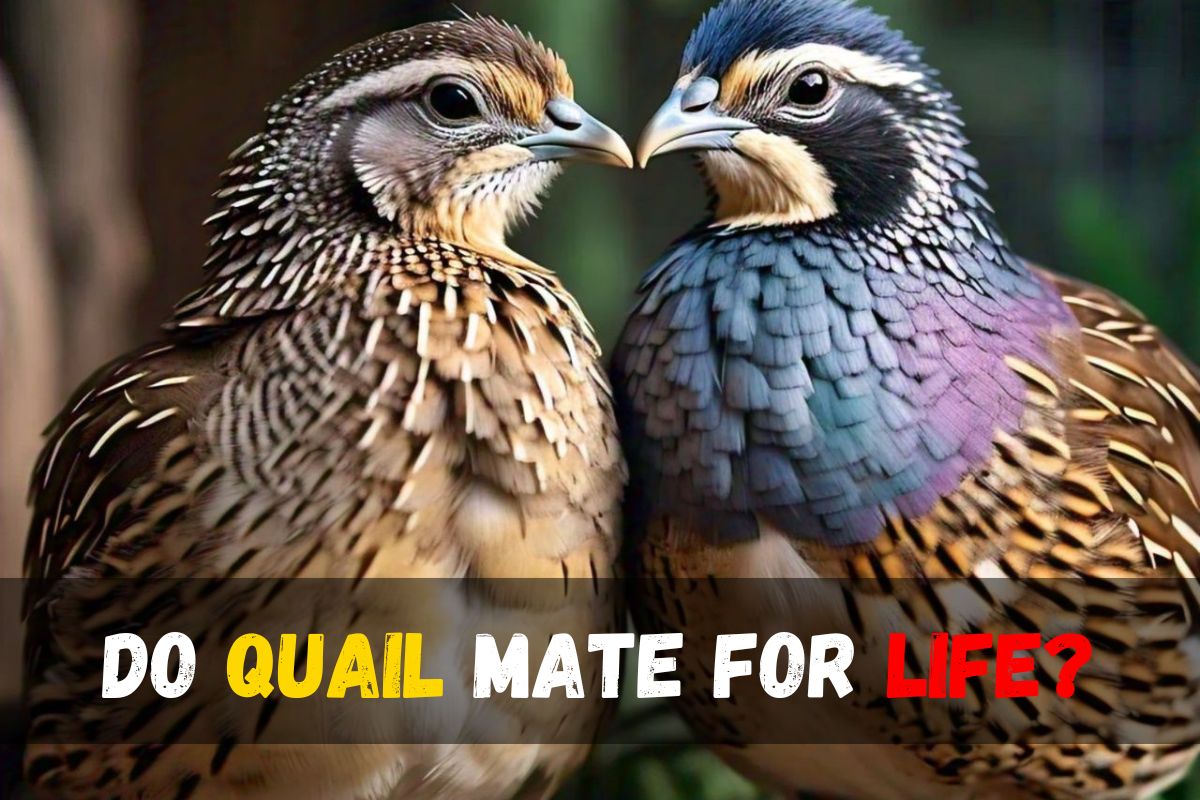Do quail mate for life
Many enthusiasts and curious minds often ponder a fascinating question: do quail mate for life? well, the answer is No, quail do not mate for life. They typically form pairs during the breeding season but do not remain monogamous for life. Quails, though perhaps less in the spotlight compared to their poultry counterparts like chickens and turkeys hold a captivating secret within their avian world. The inquiry into the mating habits of quails unveils a tale of commitment, courtship rituals, and enduring bonds that extend far beyond a mere breeding season. So, let’s embark on a journey to explore the intriguing nature of quail relationships and discover the unique aspects of their lifelong partnerships.
How Long Do Quail Need a Heat Lamp?
Quails, fascinating creatures in the avian world, indeed engage in a unique and enduring form of companionship—they mate for life. Unlike some of their more popular poultry counterparts like chickens or turkeys, quails exhibit a remarkable commitment to their mates throughout their entire life cycle.
These charming birds, often overlooked by poultry owners, have a monogamous nature that goes beyond a mere breeding season. When quail birds pair up for mating, it is not a fleeting connection; it is a lifelong commitment. The males, in their courtship rituals, display a touching display of affection towards their females, creating a bond that lasts until the end.
Can Quail Eat Chicken Feed?
The phenomenon of monogamy in quails is not universal among all species, as some are serially or seasonally monogamous. In these cases, the commitment endures until their young have fully fledged from the nest. Remarkably, some quail species, such as Gambel’s, form bonds that withstand the test of time.
This behavior echoes the touching stories found in the animal kingdom, where certain species, including quails, mirror human-like relationships. It is intriguing to learn that these small birds, like people, might meet, fall in love, raise a family, and remain devoted to each other until the very end.
How Long Do Quails Mate For?
Quails mating season typically spans from March to September, influenced by environmental factors such as food and water availability. Quail adults pair up for mating during warm seasons, and most species remain faithful to their mate throughout their lifetime.
Male quails play an active role during the mating season, engaging in elaborate courtship displays to attract females. These displays involve vocalizations like calling and crowing. Once a male captures a female’s interest, mating activities ensue, occurring multiple times a day to ensure fertilization.
During this time, a pair of quails builds a nest together. The male guards the nest, while the female takes on the responsibility of incubating the eggs. A female quail can produce up to 300 eggs annually, with the number decreasing as she gets older.
Interestingly, female quails can lay eggs without mating, but these eggs won’t hatch into chicks. To maximize breeding success, it is recommended to keep a male quail with three females. This increases the number of eggs laid and improves the chances of chicks hatching to maturity.
Quail Species and Their Mating Habits
Quail, belonging to the family Phasianidae, are ground-dwelling birds that exhibit a diverse range of mating habits across various species. Ecological factors, environmental conditions, and inherent biological traits influence the mating behavior of quails. Here, I will elucidate on some notable quail species and their distinctive mating habits.
1. Northern Bobwhite (Colinus virginianus):
The Northern Bobwhite, prevalent in North America, engages in a monogamous mating system. Pairs form during the breeding season and often remain together for that period. The male attracts the female through distinctive calls and displays, showcasing its elaborate courtship rituals. Nesting is usually on the ground, well hidden among vegetation, and both partners share incubation duties.
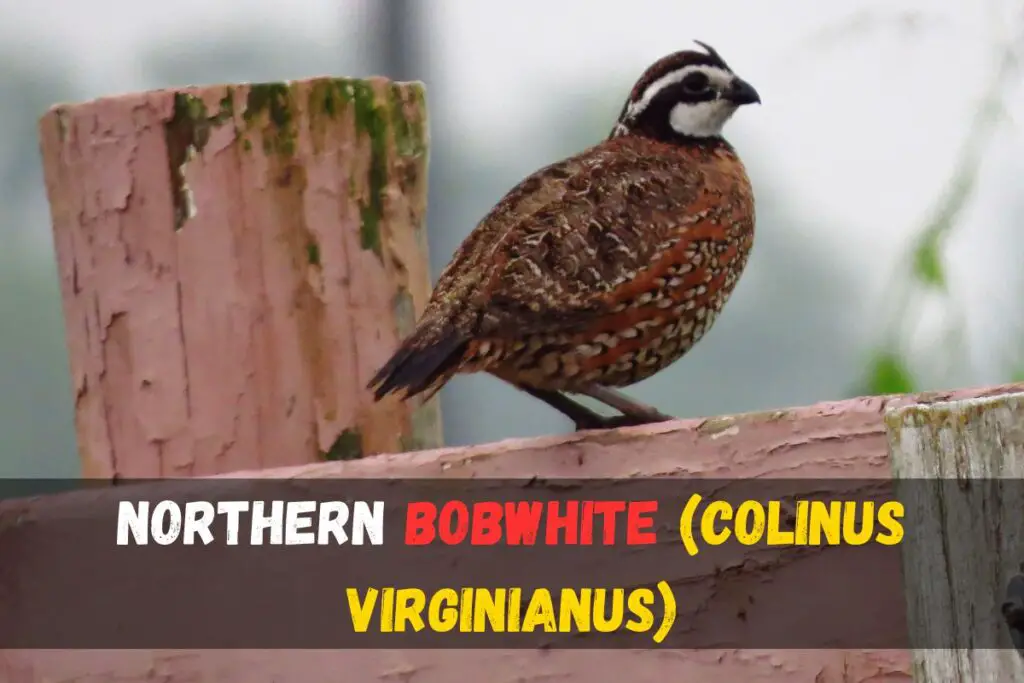
2. California Quail (Callipepla californica):
California Quail, known for their striking plumage and social nature, exhibits a polygamous mating system. Males engage in vigorous courtship displays, including head-bobbing and vocalizations, to attract multiple females. The females, responsible for nest building and incubation, may mate with different males during a single breeding season.

3. Gambel’s Quail (Callipepla gambelii):
Gambel’s Quail, native to the southwestern United States, prefers a communal nesting strategy. Multiple females lay eggs in a single nest, and communal incubation occurs. Males actively defend territory and participate in parental care. This social nesting behavior is an adaptive strategy to enhance reproductive success and increase survival rates.
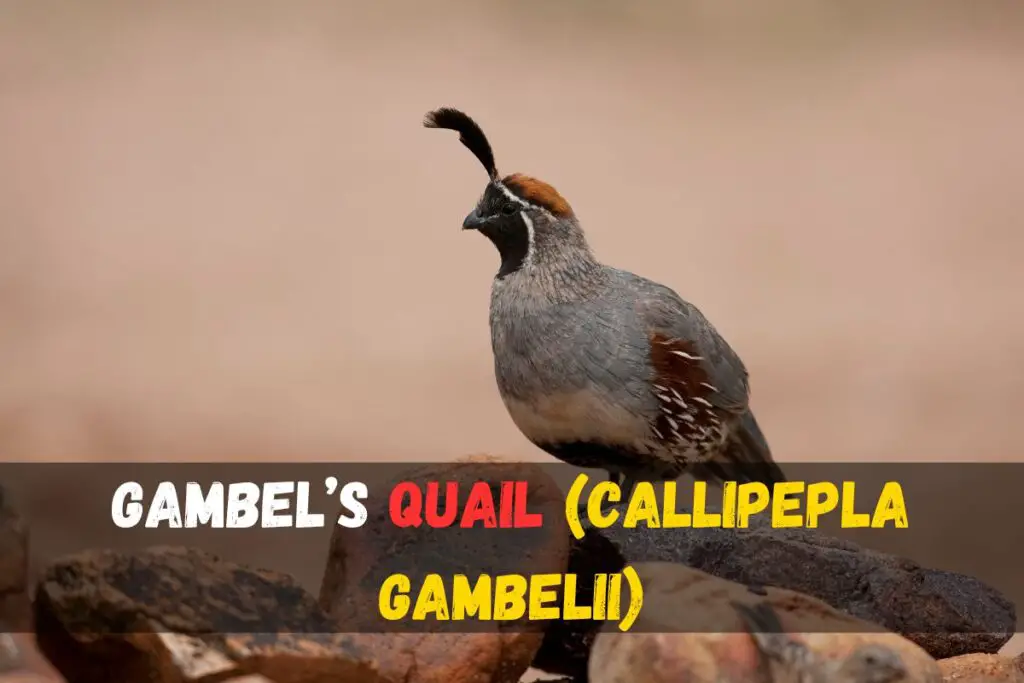
4. Japanese Quail (Coturnix japonica):
The Japanese Quail, often raised in captivity for research and agriculture, displays a promiscuous mating system. Both males and females may engage in multiple mating partners during the breeding season. Courtship involves specific vocalizations and displays. Japanese Quail are known for their precocial offspring, which are capable of independent locomotion shortly after hatching.
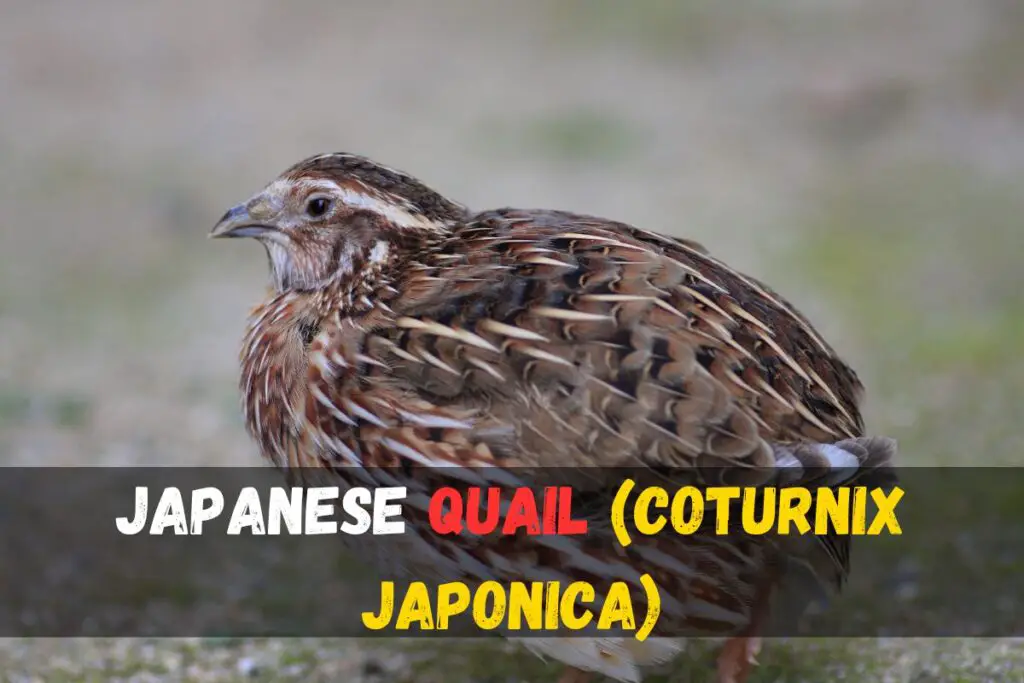
5. Bobolink (Dolichonyx oryzivorus):
While not a traditional quail species, the Bobolink is included here due to its unique mating habits. The Bobolink engages in a polygynous mating system, where a single male may mate with multiple females. Intricate aerial displays, accompanied by melodious songs, serve as courtship rituals. The females are solely responsible for nest building and incubation.

What Happens If A Quail Loses Its Mate?
When a quail loses its mate, the consequences can be multifaceted and extend beyond mere behavioral adjustments. Quails are highly social birds that form strong pair bonds, and the loss of a mate can have profound effects on their physiological, behavioral, and reproductive aspects.
Behavioral Changes:
Quails are known for their monogamous tendencies, and the loss of a mate can lead to notable changes in behavior. The surviving quail may exhibit signs of distress, including increased vocalizations, restlessness, and a heightened state of alertness. The bereaved quail may also display a reluctance to engage in typical social activities, such as foraging or communal roosting.
Social Dynamics:
Quails often rely on their mates for social support, navigation, and protection within their environment. The absence of a mate can disrupt the established social dynamics within the quail community, as the surviving individual may struggle to integrate with other pairs or groups. This can result in increased vulnerability to predation and a potential decline in overall group cohesion.
Reproductive Impacts:
The loss of a mate can have significant implications for the reproductive success of the surviving quail. Quails typically engage in cooperative breeding, with both mates contributing to nest building, incubation, and chick rearing. Without a mate, these responsibilities may fall solely on the remaining individual, potentially leading to increased stress and reduced reproductive success.
Physiological Stress:
The grieving process in quails can manifest as physiological stress, impacting the bird’s overall health. Stress hormones may increase, affecting immune function and making the quail more susceptible to diseases. Prolonged stress can also lead to changes in feeding patterns and a decline in body condition.
Long-term Effects:
The long-term consequences of mate loss in quails may include altered mate selection in subsequent breeding seasons. The surviving quail may take longer to form a new pair bond or may exhibit changes in mate preferences. These adjustments can influence the genetic diversity and dynamics of the quail population over time.
Are Quails Monogamous?
The term “monogamous” refers to the behavior of forming a lifelong pair bond. These birds, once they find a mate, tend to stay with that partner for the entirety of their lives. Notably, this is observed in various quail species, including the Gambel and Coturnix quails.
The formation of a mated pair is a crucial aspect of their social structure. These pairs engage in activities such as breeding, incubation, and caring for their offspring together. The commitment to family is quite admirable among Gambel and Coturnix quails.
After the mating process, the mated pair takes on shared responsibilities, from selecting nesting sites to jointly incubating their eggs. Interestingly, even in unfortunate circumstances where one partner passes away, male quails are known for their ability to resume incubation duties.
Furthermore, the collaborative efforts extend to the upbringing of their young chicks. Both parents play an active role in teaching the chicks essential life skills, such as fending for themselves and protecting against potential threats. A notable behavior is their coordinated defense against predators when the family is on the move, with the male leading, chicks in the middle, and the mother guarding from the rear.
How Do Male Quails Court The Females?
To begin, they perform intricate ritual dances and delicately nibble on food to showcase their prowess. These dances involve head lowering, followed by the impressive extension of wings and elbows, forming a wall. The male quail then puffs out its chest and confidently walks towards the female, emitting distinctive ‘kow’ and ‘whit whit’ sounds at different intervals.
Additionally, male quails exhibit their courtship skills by perching on tree branches, creating a singsong sound to allure females. Once a female is sufficiently impressed, they mate, becoming partners for life and sharing parenting responsibilities.
During the nesting phase, the male and female quail collaboratively build a nest. In cases where the female quail is absent, the male quail takes on the role of incubating and caring for the hatched chicks until they mature. This intricate courtship and bonding process underscores the fascinating dynamics of male quail behavior in the pursuit of attracting and securing a mate.
How Do Quails Reproduce?
Quails reproduce through a process involving mating and egg-laying. When a male and female quail mate, the female lays eggs, usually producing about one egg per day. However, it’s crucial to note that these eggs won’t hatch into chicks unless they are fertilized.

If you’re a quail owner not interested in breeding, you can avoid pairing your female quail birds. The unfertilized eggs laid by female quails are collected for consumption. Interestingly, quails may also consume their eggs, providing essential proteinous nutrients.
After mating, monogamous quail species collaboratively build nests. Both the male and female take on the responsibility of caring for their young. The female quail incubates the eggs, with a typical production of 10 to 16 eggs per mating season.
The journey from eggs to chicks is challenging, as quail eggs and chicks have a low survival rate. Only about half of the brood usually makes it to maturity. Some quail species form coveys, where mated families bond together for protection. Coveys, ranging from 10 to 20 quails, are formed in a circle to watch out for predators. This formation also helps in generating heat, especially during winter, ensuring the survival of the brood through harsh conditions. In this way, the quail population thrives, with each generation successfully produced.
At What Age Do Quails Reproduce?
Quail birds typically reach sexual maturity and can start reproducing between 6 to 7 weeks of age. The male quail birds may begin mating as early as 5 to 6 weeks. It’s noteworthy that quails generally exhibit early mating behavior, but their fertility peaks early and declines rapidly.
Sex differences between male and female quails become noticeable around 3 weeks of age. Female quails tend to grow larger with longer, pointier feathers. Additionally, the plumage of females around the breast and under the throat is white, distinguishing them from males. These observable differences indicate that quails are ready to mate.
What Are The Common Problems When Quails Mate?
When quails engage in mating, several common issues may arise. One significant problem involves the loss of feathers and pecking, particularly on the female quail. This often happens as the male quail, also known as a roo, mounts the female and either holds her head down with his beak or pecks incessantly.
A noticeable consequence of this behavior is the female quail missing feathers on her head. Fortunately, in most cases, this is not a cause for major concern. However, when quails mate regularly or a male quail consistently mates with a particular female, the pecking and feather loss can become a persistent issue.
To address this concern, a practical solution is to temporarily separate the quails. This separation allows the female’s head injuries to heal without further interference. It’s essential to recognize that quails have a distinct pecking order, and aside from mating, instances of self-pecking can occur. Being aware of these behaviors is crucial for understanding and managing the well-being of these birds
FAQ’S
Do quails have more than one mate?
Gambel’s Quail are generally recognized as socially monogamous, meaning they tend to form pairs. However, it’s noteworthy that some female quails may exhibit a behavior known as desertion. This occurs when a female leaves her initial mate and the brood they are caring for to take up with a new mate and lay another set of eggs, forming a new clutch. In such instances, the responsibility of raising the chicks falls upon the original partner left behind.
Do Japanese quail mate for life?
Yes, Japanese quail are known to mate for life. They are genetically designed to forage, searching over wide areas of fertile ground for their food. In addition to their foraging behavior, Japanese quail exhibit various characteristics typical of Galliform birds, such as caring for their young, nesting on the ground, and engaging in dustbathing. One notable aspect of their behavior is forming lifelong mating bonds, indicating a strong and enduring commitment to their mates.
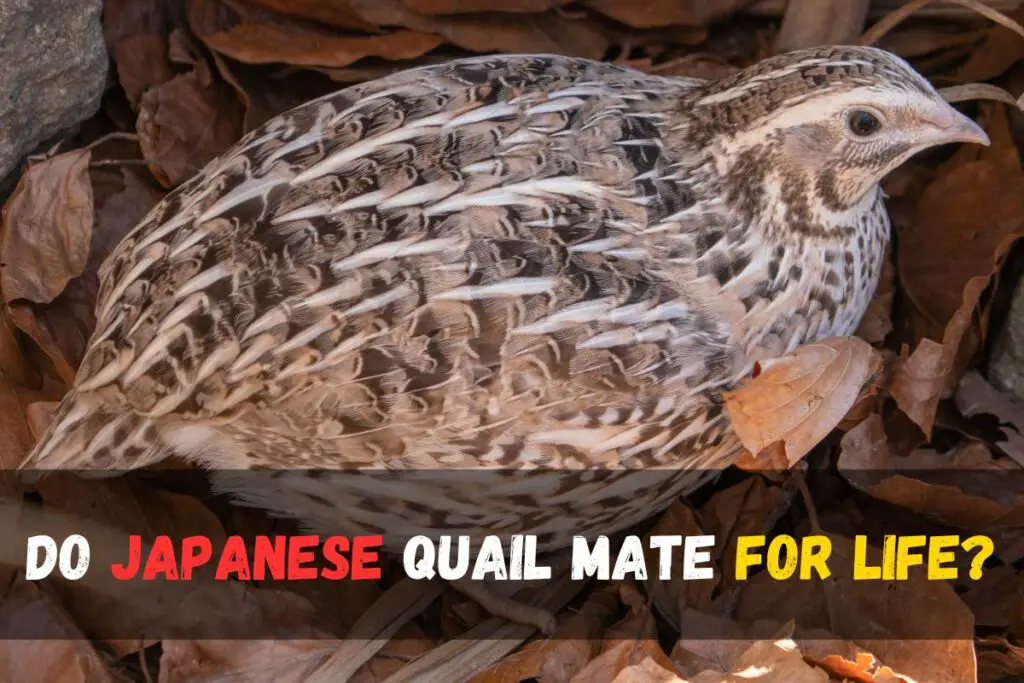
What is the lifespan of a quail?
The common quail, scientifically known as Coturnix coturnix, is the most widespread quail species in Europe. In its natural habitat, these quails usually live for around 2 to 3 years. However, in captivity, where they are provided with controlled conditions, the average lifespan extends to about 5 years. There have been exceptional cases of individual birds living up to a maximum of 11 years, though such instances are rare. Therefore, when considering the lifespan of a quail, it’s essential to account for the differences between their life expectancy in the wild versus in captivity.
What is the duration for which baby quail remains with their parents?
Baby quail stays with their parents for approximately 4 weeks. During this time, they undergo the fascinating process of incubation. Once the eggs hatch simultaneously, small, walnut-sized, and striped chicks emerge. These chicks leave the nest as soon as they dry from their shells. Despite their independence in feeding themselves, the chicks continue to stay with their parents for the first four weeks of their lives. This period is crucial for their development and learning from their parents about survival and navigating the world around them. It’s a remarkable journey from hatching to independence, and the parental care lasts until they are around a month old.
Can 2 male quails be kept together?
In the wild, quails, like partridges, are territorial. Males mark their area and do not allow other males to enter. However, in captivity, it’s advisable not to keep two male quails together in the same cage. This is because they tend to be territorial and may end up fighting each other. To ensure peaceful cohabitation, it’s better to combine one male quail with a few females in captivity. This way, they are more likely to dwell together peacefully.
Will quail lay without a male?
Yes, quails can lay eggs without a male. A male is not necessary in the flock for the females to lay eggs. Regardless of whether a male is present or not, the females will lay eggs. These eggs, however, will be unfertilized, making them suitable for consumption. If you want the quails to breed, then you should place one male in the flock.
Can quail lay 2 eggs a day?
Quails typically lay only one egg a day at the most. Unlike chicken eggs, quail eggs are very small. So, it’s not common for a quail to lay two eggs in a day. Their eggs are known for being a bit smaller than chicken eggs, and it takes several quail eggs to equal the size of one chicken egg. Therefore, it’s unlikely for a quail to lay two eggs in a single day.


